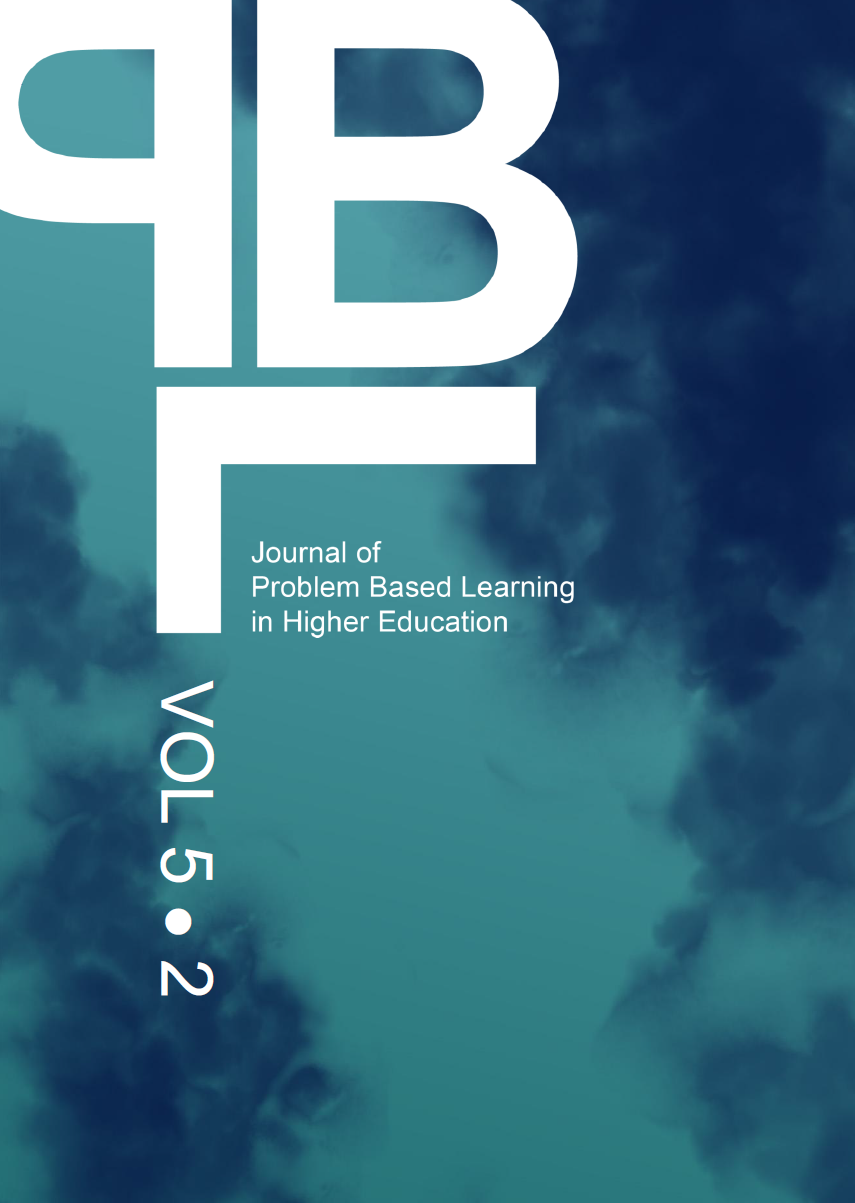Abstract
The PBL unit of fluid and electrical drive systems is taught in final semester of undergraduates in mechanical engineering department of the Australian College of Kuwait (ACK). The recent project on an automated punching machine is discovered more appealing to both students and instructors in triggering new ideas and satisfaction end results. In this case study, the way this PBL unit is coordinated and facilitated is explained. Two examples of student works are presented. The aim is to expose the students to real world engineering problems but in a satisfying manner. Similar to real life problems for engineers, restrictions are applied for the students on costs, availability of ACK facilities, and application of automation tools. Students are directly engaged by using technical standards on punching heads and dies, standard tensile testing of plates, and so on. Arduino microprocessor programming, an open-source hardware and software electronic platform, and electro-pneumatic devices are adopted for developing the automated punching machine. The goal of the PBL course is to acquaint students learning based on the concepts of team working, engineering design, professional manufacturing, and sequential testing of the end product. It is found that students achieved their best and developed new skills in this PBL unit as reflected in their portfolios.
References
De Graaff, E. & Peter A. J. Bouhuijs (1993). Implementation of problem-based learning in higher education. Amsterdam: Thesis Publishers.
De Graaff, E., W. Ravesteijn & J.O. Kroesen (2006). „Engineering the future: the social necessity of communicative engineers.” European Journal of Engineering Education, 31 (1), pp. 63-71.
De Graaff, E. and A. Kolmos, (2007). History of problem-based and project based learning, Management of change implementation of problem-based and project-based learning in engineering, E. de Graaff and A. Kolmos (eds.), Rotterdam: Sense Publishers, pp. 1-8.
Edwards, Metric punch and die set, http://www.edwardsironworkers.com/c-15-metric.aspx, accessed January 2017.
Goyal, P., Srivastava, G., Singh, R., Singh, N., Review on Pneumatic Punching Machine and Modification in Punch Tool to Reduce Punching Force Requirement, International Journal of Engineering Technology Science and Research (IJETSR),Volume 2 Issue 2, February 2015.
Jaeger, M. & D. Adair (2015). “Students’ perception of learning facilitation during an interdisciplinary engineering design course- a case study.” Proceedings of 19th International Conference on Engineering Education, July 20-24, 2015, Zagreb, Zadar (Croatia).
Jaeger, M. (2017). “The PBL facilitator guide: A week by week guide”, version 1.3, Australian College of Kuwait, Kuwait, 9 January 2017.
Sang, Y.Y. (2001). “Implementing problem-based learning in nurse specialists continuing education program - an experience of an emergency department.” Proceedings of 3rd Asia Pacific conference on PBL. Queensland, Australia.
Schmidt H.G. (1993). “Foundations of Problem-based Learning: some explanatory notes.” Medical Education, 27, pp. 422-432.
Schweinhart, L. J., and Weikart, D. P. (1997). “The high/scope pre-school curriculum comparison study through age 23.” Early Childhood Research Quarterly, 12 (2), pp. 117-143.
Sedaghat, A., Bani-Hani, E., Shehata, H., Al-Qudah, S., Bani Salim, M.N.A., Khanafer, K. (2016). “The Application of Project Based Learning (PBL) in Fluid and Electrical Drive Systems,” Project Based Learning (PBL) Symposium – Preparing Students For The Workplace, ACK, Kuwait, 13 March 2016.
Standard Test Method for Tensile Properties of Plastics (2003) ASTM D-638-02a, ASTM Committee D20 on Plastics and is the direct responsibility of Subcommittee D20 on Mechanical Properties, Current edition approved November 10, 2002, Published January 2003.
Van der Vleuten, C.P.M., Norman, G. R. and De Graaff, E. (1991). “Pitfalls in the pursuit of objectivity: Issues of reliability.” Medical Education, 25, pp. 110-118.
Articles published in Journal of Problem Based Learning in Higher Education are following the license Creative Commons Attribution 4.0 (CC-BY)
Authors retain copyright and grant the journal right of first publication with the work simultaneously licensed under a Creative Commons Attribution 4.0 International License (CC-BY). Further information about Creative Commons
